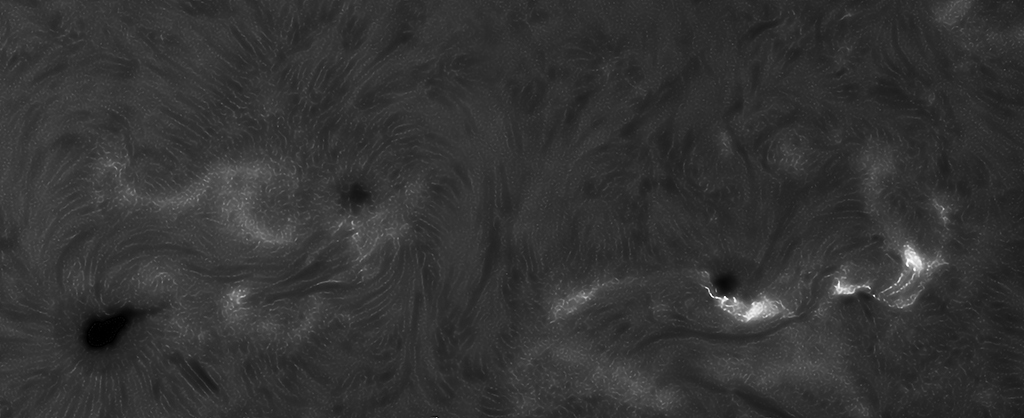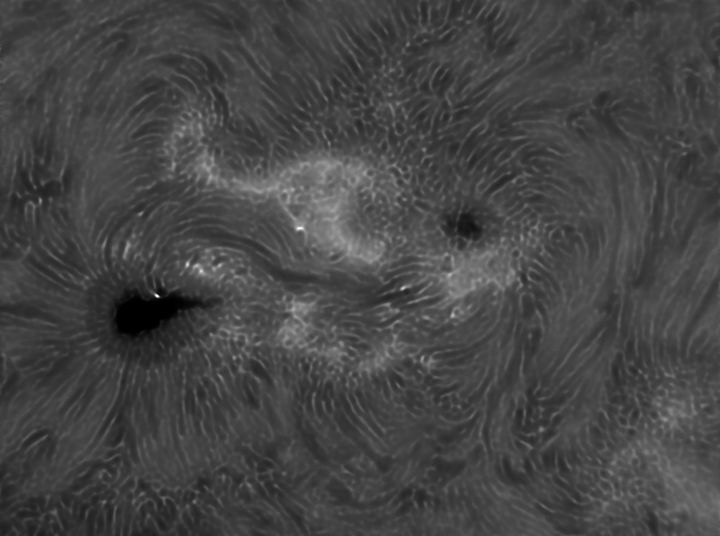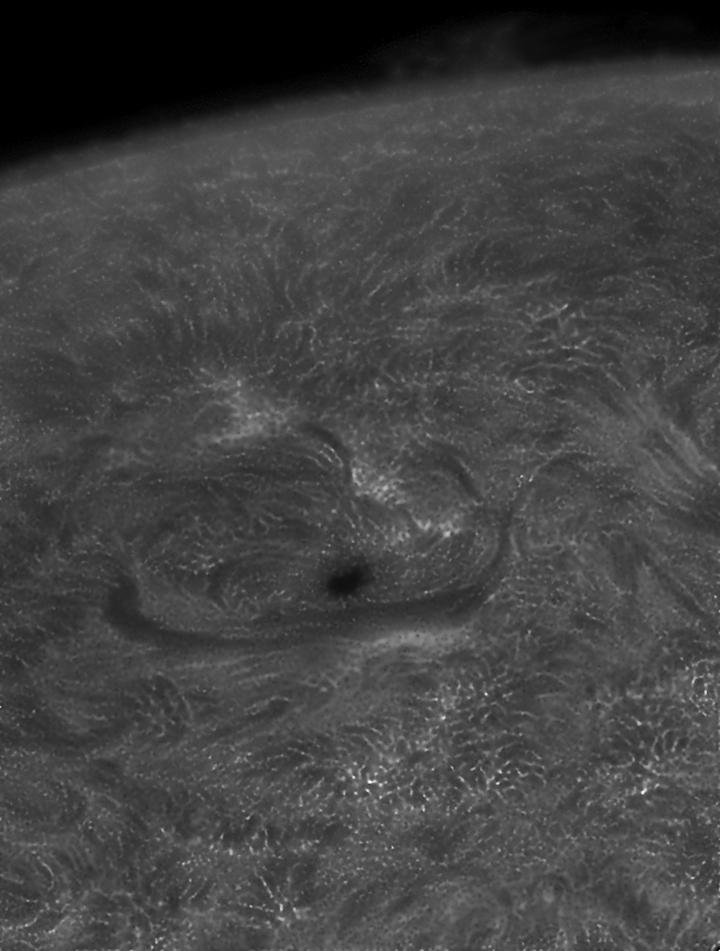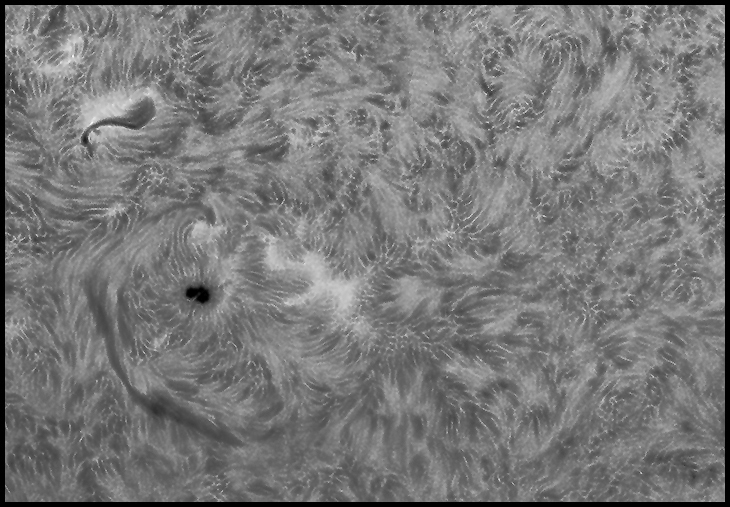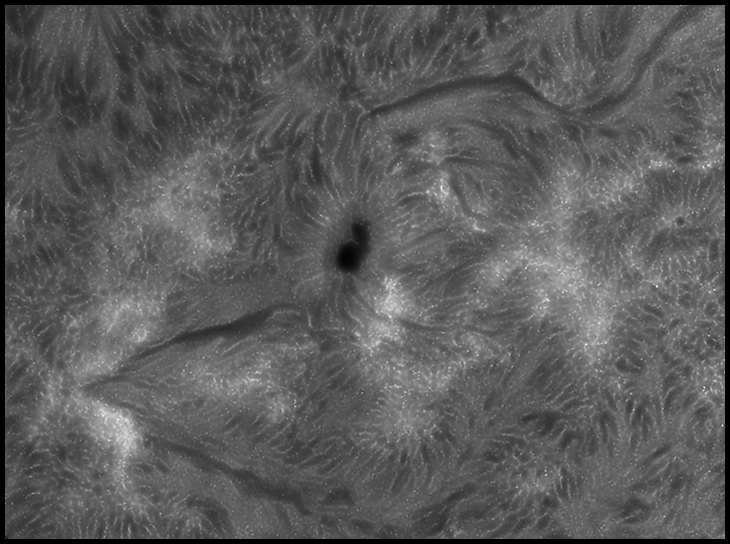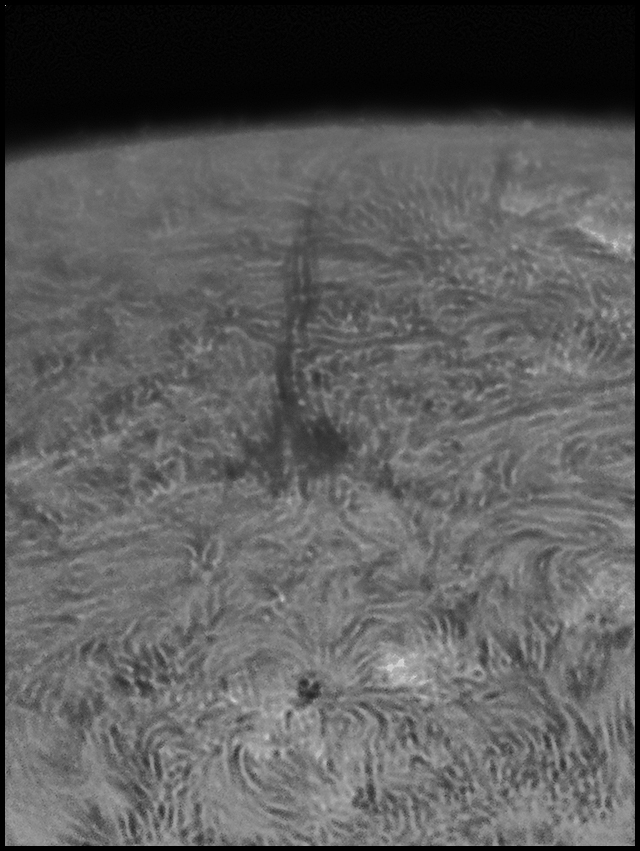|
5/11/2014. It's been nine months since my last confession... Trees hide the Sun for more and more of the year and only in the last few days have I found abundant sunshine out by the telescopes. I put the Lunt 60, double stacked, on the G11 mount and admired the view, then found that the Dell Latitude D820 had failed completely when I tried to take some images. Fortunately, it is so far behind the curve that I could buy another off eBay for $75 and swap out the hard drive, hybrid drive, memory, etc. It was good to go within an hour. Today, I mounted the Lunt piggyback on the AT10RC and gave it a try. For imaging, I missed the image scale of the frankenscope, so I reassembled that and played with it in the afternoon. Seeing was dreadful, but there were many active regions and if I kept after them, sooner or later I figured I'd catch a steady interlude. Around three o'clock, the active region just west of the one I had been watching launched a C3 flare. It all comes back. I took 1500 frames of each interesting area (AR 2055 and AR 2056, flaring), stacked the best 100 frames from each clip in AVIStack2 (applying a flat made from 50 defocussed frames from a nearby boring area of the Sun), assembled the mosaic in Photoshop, and then applied histogram adjustments and deconvolution to the TIFF output using PixInsight. With marginal focus and horrible seeing, the exact parms of the deconvolution pass mattered even more than usual. But in the end, the results were not bad ("view image" for a somewhat larger rendition):
Then the power supply overheated, and I remembered that I still need to work out some ventilation for the power and data distribution box. (That will also be needed in order for the Robofocus controller to experience ambient temperatures so that its temperature compensation code can work for me in the deep sky.) Before and after this action, I captured a few other get-reacquainted views:
Best 500 of 1500, single clip.
Best 100 of 1500, two clips
2014/5/12. Another clear (but not so steady) day. More practice, this time a four panel mosaic. Some unpleasant artifacts arise during the decon steps, and I need to figure out how to get the best from the process without so much of the liability.
I don't know why I get good seeing in the mid-afternoon, but it seems pretty common. After flipping over the merdian, I relocated the Gamma control in FireCapture and experimented with it set to "0" rather than the default "50" -- contrast on the screen is much better, which makes focusing surer, if nothing else. I also boosted gain to ~45 in order to keep exposure time near 5 ms to make use of flickers of exceptionally good detail.
:: top ::
|
© 2013, David Cortner
